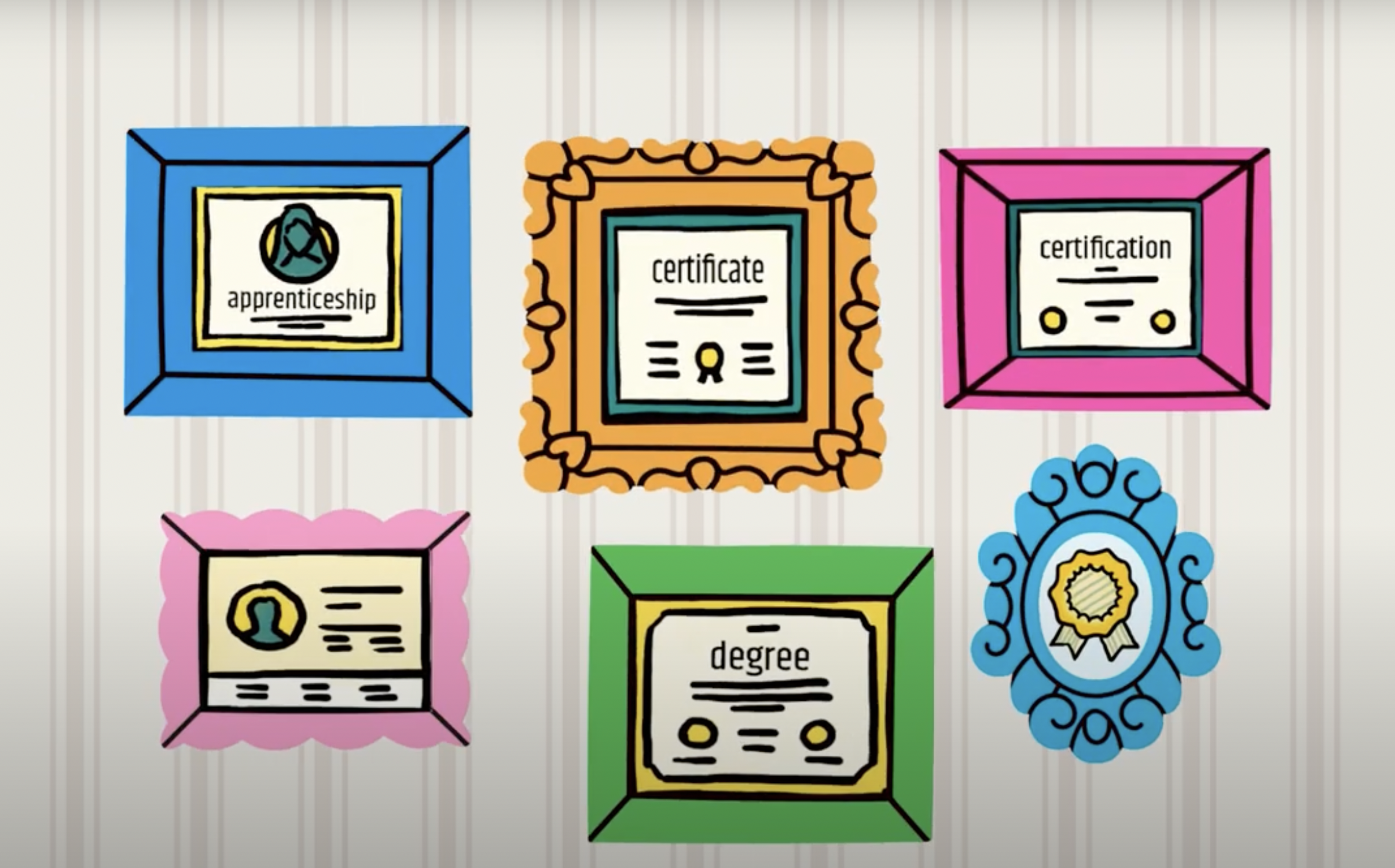Getting started on stackable credentials
If you read this page talking about different types of credentials, you already know a little bit about stackable credentials. Here’s a refresher: the phrase ‘stackable credentials’ refers to the strategy of completing multiple education programs (like degrees, certificates, certifications, and others) to build your skills and demonstrate knowledge. Stacking your credentials builds up a varied skill set, which helps you to be more qualified and competitive for jobs.
Stacking credentials can be an attractive way to get your education because they are flexible and chosen by you. You can earn these credentials in small steps, often through the completion of cheaper and shorter programs. You get to pick what you want to learn, and when you learn it. Each step you take brings you a little bit farther toward reaching your education and career goals.

Employers also like multiple credentials because it can be easier to tell what a job candidate’s specific skills are. By taking on multiple education programs (even if short-term), you are also showing that you are committed to continuous learning and skill development — which is something employers like to see.
How to plan your stackable credential path
This path is unique to you, your learning goals, and your job goals — but there are a few ways that you can figure out what to do.
First, think about your end goal. Do you know what kind of career you want to have? If you do, you can explore the minimum education requirements of different careers on MyFutureVT. These requirements should be used to give you an idea of what level of specialized knowledge is needed for that career. Even when an associate or bachelor’s degree is listed, employers may consider the stacking of multiple other credentials in place of a degree. If a college degree is truly needed for a job, more credentials earned before or after college can help you stand out among other candidates.
Second, be sure you know what skills are needed to do the job. A good way to figure out what those skills are is to look at open job postings for the job you want. Usually, employers list job requirements in the job description. You can look at a few listings for similar jobs and make a list of any requirements that come up multiple times. This is a good sign that you should look for credentials that include those skills. For example, if cybersecurity job requirements usually ask for candidates to be able to code at an advanced level in Python, you should plan on including a certificate or certification program in Python in your stackable credential plan.
Third, consider doing an informational interview or a job shadow. This way you can ask employers about what skills and abilities are most important to them, see workers on the job, and ask questions about current employees’ education paths. They might have taken the stackable credential route, too!
Unsure about your career path?
If you don’t know what kind of career you want to have, you have a few options. You could explore your interests more and make a decision before you pursue any education programs. Or, you can start to pick out stackable credentials that will be applicable to many different careers. For example, maybe you are interested in the digital arts field but don’t know exactly what you want to do. You can still explore different job postings and see what they have in common. For some fields, certain skills might be required regardless of the specific job title. For digital arts, it might be Adobe software like Photoshop, Illustrator, and InDesign. You can start your stackable credential education journey with a certificate in one of those, or you might begin by learning soft skills like leadership, management, problem solving, or others.

What’s next?
Once you have a rough idea of what you need to learn about, you can explore education programs offered in Vermont on MyFutureVT.
If you aren’t sure where you’re headed in the future, that’s okay too. You don’t have to plan out your entire stackable credential journey in advance. In fact, the skills and certifications you may need for the workforce of the future may not even exist today.




